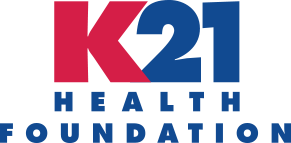Incorporating Grant Proposals into Your Annual Planning
You’ve got a great idea to help the people in your community, but sometimes the work to get there seems overwhelming—especially when you add grant proposals to the mix. But as Wayne Gretzky once said, “You miss 100% of the shots you don’t take.”
K21 is dedicated to helping the residents of Kosciusko County thrive. We want to help you build the strategies, goals, budgets, and tactics needed to make grant submissions part of your annual planning.
Elements of the Grant-Proposal Process
Annual planning is an opportunity to clarify expectations and responsibilities to ensure that everyone is working towards the same goal and with the same understanding. Your organization needs a strategy to define where you want to go and how to get there. Here are a few critical elements of the grant proposal process:
Goal Setting
A grant funding goal will keep you on track, provide motivation, help you manage time, and eliminate stress. This goal setting is best done with a team; your organization’s leadership or board is likely have an idea about how much funding is required. When coming up with grant proposal plans, it is critical to think SMART:
- Specific: Be clear, well-defined, and realistic with your funding goals. Don’t forget to specify the type of grant, the focus of the grant, and the population.
- Measurable: It may seem daunting, but you must include an actual number—whether it’s the amount of funding, number of grants you wish to attain, or both.
- Achievable: While it is important to think big when it comes to your nonprofit’s financial goals, it’s equally important to be realistic—set targets that you know you can achieve.
- Relevant: Choose goals that are consistent with your organization’s values. This could be related to the type of grants you apply for or the amount of funding you need, for example.
- Time-Bound: There must be a time limit on your goal. You can write your goal for the year, quarter, or month, or even define goals for each of those time frames.
Budgeting
In your annual planning process, determine where you’re currently getting your funding: the government, fundraising events, individual donors or sponsors, or other critical revenue streams, including grants.
When presenting your budget in a grant proposal, clarify what you’re asking for and why. These budgets are commonly formatted in tables and figures with each amount clearly labeled, and you can include a justification statement explaining why each cost, material, and piece of equipment is valid, reasonable, and important for your project.
Tips for a Successful Grant Proposal
Once you have finished the pre-proposal process, you can begin drafting your grant application. Here are a few tips to remember:
- Pay attention to the granting agency’s key interests
- Organize your ideas through lists
- Write carefully customized proposals for each granting organization/application
- Know your submission deadlines
- Go after grants of all sizes
- If at first you don’t succeed, try, try again
At K21, we understand the importance of nonprofits impacting health and wellness in the community, and we want to financially partner with you to make it happen. If you are interested in applying for a grant from us, it is critical that we have a clear understanding of how K21’s mission will be advanced by supporting your project, program, or service, and the intended benefit(s) to residents of Kosciusko County.
Ready to apply for a grant from K21? Learn more about our mission and grant process.


